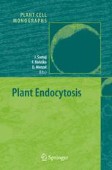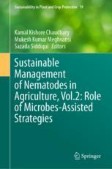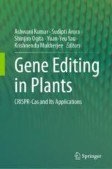Search
Search Results
-
The Updated Review on Plant Peptides and Their Applications in Human Health
Biologically active plant peptides, consisting of secondary metabolites, are compounds (amino acids) utilized by plants in their defense arsenal....

-
Methods and Molecular Tools for Studying Endocytosis in Plants---an Overview
Proteins of the endocytosis machinery in plants, such as clathrin and adaptor proteins, were isolated and characterized using combinations of...
-
Genetic transformation of legumes: an update
Key messageThis review summarizes the recent advances in legume genetic transformation and provides an insight into the critical factors that play a...

-
Introduction to Biofortification and Challenges for Nutrition Security
By the middle of the century, the global population will have surpassed 9 billion people, increasing the demand for food, water, and space....
-
Advances in Breeding Strategies for Improving Stress Tolerance in Brassicas
Brassica juncea, a major crop of the Indian subcontinent, is gaining greater acceptance worldwide especially in the low rainfall areas due to its...
-
Soil Microbiota and Mechanisms of Plant Parasitic Nematode Suppression
Plant parasitic nematodes (PPNs) are distributed worldwide and cause significant losses in agricultural fields. For the sustainable productivity of...
-
Genetic Modification of Brassica juncea: Current Scenario and Future Prospects
In recent years, the development of transgenic Brassica juncea with enhanced tolerance to biotic and abiotic stress conditions has been reported by...
-
Microwave Heating for Grain Treatment
Microwave radiation as an emerging technology has shown a great potential in food and agriculture. Microwave as a source for thermal treatment of...
-
Plant Growth-Promoting Rhizobacteria (PGPR) and Plant Growth-Promoting Fungi (PGPF) for Alleviating Abiotic Stress in Plants
In the realm of sustainable agriculture, the presence of plant growth-promoting rhizobacteria (PGPR) plays a vital role in mitigating the adverse...
-
Microbial Elicitors for Priming Plant Defense Mechanisms
Some microrganisms have evolved to be associated with plants, receiving nutrients from plants, and hel** plants to fight pathogens by producing...
-
Genomics of Crucifer’s Host-Pathosystem at a Glance
Crucifer’s crops are very important crop commodity with very significant contribution in the world’s need of human and animals yielding edible and...
-
Influence of Extrusion on Food Bioactives
Today, consumers are concerned with the fact that the food they eat should not only be tasty, but also healthy and should include more bioactive...
-
Rhizospheric Microbes and Plant Health
The microflora of rhizosperic microorganisms at different richness levels have shown to contribute in the composition and plant biomass with...
-
Natural Insecticidal Proteins and Their Potential in Future IPM
Increasing population and global food security is the foremost challenge for this century. Insect pests cause substantial damage to our crops by...
-
Molecular mechanisms, genetic map**, and genome editing for insect pest resistance in field crops
Key messageImproving crop resistance against insect pests is crucial for ensuring future food security. Integrating genomics with modern breeding...

-
CRISPR-Based Genetic Control Strategies for Insect Pests to Mitigate Classical Insecticidal Approaches
Nutraceutical properties of food have always been an important interface of concern as food directs both physical and mental health and forms the...
-
Cultivation and Utilization of Shiitake Mushroom
Shiitake (Lentinula edodes) isShiitake () the third most commonly cultivated edible mushroomEdible mushroom species in the world. It has attracted...
-
Genetic engineering of crops for insect resistance: An overview
Phytophagous insect incidence is a serious threat for reduction of crop productivity globally. There is an estimation of one fourth of crop is being...

-
A comprehensive review on bitter gourd (Momordica charantia L.) as a gold mine of functional bioactive components for therapeutic foods
Bitter gourd is a tropical wine grown mainly in India, China and South East Asia. The plant is cultivated mainly for its fruit part which is edible....

-
Research advances and prospects of legume lectins
Lectins are widely distributed proteins having ability of binding selectively and reversibly with carbohydrates moieties and glycoconjugates....

